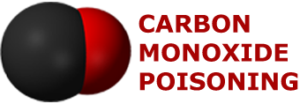FAQ: How do High Levels of Carbon Monoxide get into a House?
Short Answer: In order for there to be a high level carbon monoxide exposure indoors, there must first be a fuel burning appliance or engine, that is creating the CO and there must be a pathway for that toxic gas to get inside.

How do High Levels of Carbon Monoxide get into a House? They get in through the mechanical circulations of air, as shown here in a forced air furnace. Or they get in through diffusion, as carbon monoxide will pass through walls, especially drywall.
From our carbon monoxide poisoning, video podcast:
Gordon Johnson: Let’s talk about pathways. So, Griff, why do we not only have to have the existence of carbon monoxide, but the pathway to have someone become poisoned?
Griff Winthrop: Well if the carbon monoxide isn’t going to get into your ambient air, then you’re not going to be poisoned by it.
Gordon Johnson: So let’s take our garage example. You forgot to hit the off button on your modern car. After you hit the park button, you got out of your car. It’s quiet. It may even pause for a minute or two. You get out of the car. And now my radio keeps running even when I get out. So it’s getting even harder to know when I turned it off. I walk in the house, I shut the door. How’s that carbon monoxide getting in my house?
Griff Winthrop: There’s a couple of different migration pathways. People don’t realize this carbon monoxide will go right through drywall. The molecule is so small, and that’s called diffusion. Migration. So if you have diffusion, migration, it’s easily explained by using a salt water, right.
So if you have if you put salt in water, the salt quickly will dissolve in solution. This is the nature of chemistry and the nature of physics, it seeks out that part of the water that doesn’t yet have a lot of salt in it.
Okay. Same thing is true in any fluid, and air is considered a fluid. And so if you have a high concentration of carbon monoxide in your garage and you have drywall between your garage and your kitchen, the carbon monoxide is going to seek that air that has less of it, so it’ll migrate through diffusion. Migration.
Gordon Johnson: Now, there’s two other mechanisms that are probably more important than diffusion in this situation. We have the blowing up the balloon phenomenon in the garage. The garage is now becoming more and more full of not just carbon monoxide filled air, but warm and hot air. And it’s got more air than it should. So it’s like a balloon, and it’s going to try to push through that wall more than it would just because you sprayed carbon monoxide around in the, in the garage.
But what happens if I walk into my house and like most days when I get coming from the car, I turn on, go in the bathroom and turn on the bathroom fan, or I walk into the kitchen and turn on the kitchen fan. Now what happens?
Griff Winthrop: Yeah. You’re talking about a negative pressure condition. And what you’ve done is you’ve.
Gordon Johnson: Don’t use the word negative pressure. Let’s talk about suction.
Griff Winthrop: Yeah. You’ve created it when I was going to that was going to be my next two words. You’ve gone from what is an environment that is neutral to one that is sucking. And so if you turn on a bathroom fan, or you turn on something that is going to pull air out of the indoor space, like an overhead hood on your on your stove, you’re going to start sucking air from the garage into where you’re standing or where that fan is, and it’s going to pass into the room, and then diffusion migration will take over and it’ll completely fill the house. As long as carbon monoxide is still coming out of that car.
FAQ: Will a Forced Air Furnace Create a Pathway for Carbon Monoxide to get into the Rest of the House.
Short Answer: Yes, as the CO will be drawn into the supply air near gaps in the filters.
Pathways are important in understanding the cause and origin of any carbon monoxide poisoning. The most obvious pathway is usually the forced air fan on a furnace. To heat a home, the furnace circulates the heated air into the rooms, and then pulls out of those same rooms, somewhat cooler air, through what are called the cold air return. If there is a CO leak in that room, the CO will be sucked into the supply air side of the forced air heat process and be circulated.
When a dwelling or other indoor space, has a boiler, then the heat is being transferred through hot water pipes, typically without any air circulation process. In such cases, the CO will get to the entire house slower, but through diffusion, it will get their over time.
See our next blog for more details.
